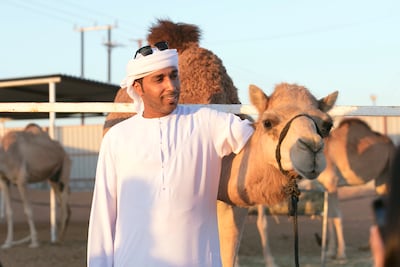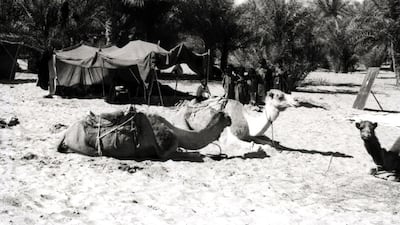Hot sticky days are almost here again, with temperatures rising as we roll full-speed ahead into the UAE summer. And as many of us prepare to travel, swapping Dubai’s ocean breeze and Abu Dhabi’s sunsets for cooler climes, we turn our focus to the more humble summers of years gone by when jumping on a flight wasn’t quite so easy.
Before the UAE unified as a country, most summer travel plans revolved around swapping hot and humid coastline climes for nearby mountain or desert terrain.
Known as Al Maqidh — a word that comes from the Arabic for the hottest part of summer — the journeys were once an important ritual for Emirati families, who would await them eagerly each year.
Leaving the country’s coastal regions, people would flock to the mountains of Ras Al Khaimah and Fujairah, or to the oases of Al Ain, where cooler weather, fresh harvested fruit and spring water was readily available.
“We used to spend the summer season in Al Hamra, a coastal area in the emirate of Abu Dhabi, and travelled on camel to Liwa area during the autumn,” said Saeed Ahmad Rashid Matar Al Mansouri from Al Dhafra in a document published by the UAE's National Archives.
These summer trips would typically average about three months, and back then there wasn’t a choice of five-star hotels to stay in. Instead, people would bed down in huts made of palm fronds.
“They would stay in what we call 'bait al arish' — or the palm tree house,” Yousef Al Mannaee from Dubai's Sheikh Mohammed bin Rashid Al Maktoum Centre for Cultural Understanding tells The National.
"It’s a house made out of palm trees. They would build it when they got there and every family would know which place was theirs in that area."
One thing that perhaps has not changed too much when it comes to summer travel is that these annual journeys were largely left up to the woman of the family to organise.
“Before men sailed for pearling, they would give down payments to women in the family to help prepare for the summer journey and pay camel owners who would carry them to Oman or Liwa,” said Obaid Rashid Ahmed bin Sandal Al Ali in the book Their Memory our History, published by the National Archives.

Traditionally, these camel owners would set out in groups of three to four at the start of the summer season and journey to coastal cities where they would transport residents to oases and other cooler regions of the country, according to Wam. These camel owners were usually Bedouins known for their loyalty, expertise and resourcefulness on the desert roads.
But by the early 1960s, cars were more common.
“People used what was sort of like an old Uber system, with one person in the neighbourhood owning a car, a four-wheel [drive], and taking other families to where they needed to go for the summer,” Mr Al Mannaee says.
"Others would still use their camels as their main transport to get there.
"The unification of the UAE led to the founders of the country implementing a lot of initiatives to [improve] the lifestyle of people so they didn't have to go to Al Maqidh any more."
Coupled with more widespread air-conditioning, this meant that these journeys to escape the heat soon ceased, but the summer sojourns still hold fond memories for many.
“My mother used to spend the summer season near the mountains in Ras Al Khaimah and when she used to go there with her family they would have a lot of fun,” Mr Al Mannaee says.
"They went to an area where there were a lot of palm trees and there would be some small pools, so that they could swim over there too. The children really used to look forward to it. They had a lot of dates and fruit, and the weather was a little bit better there than in other places."

























